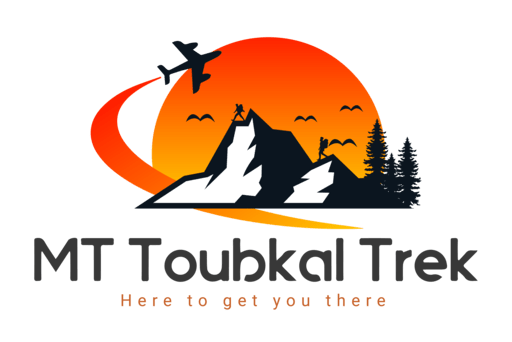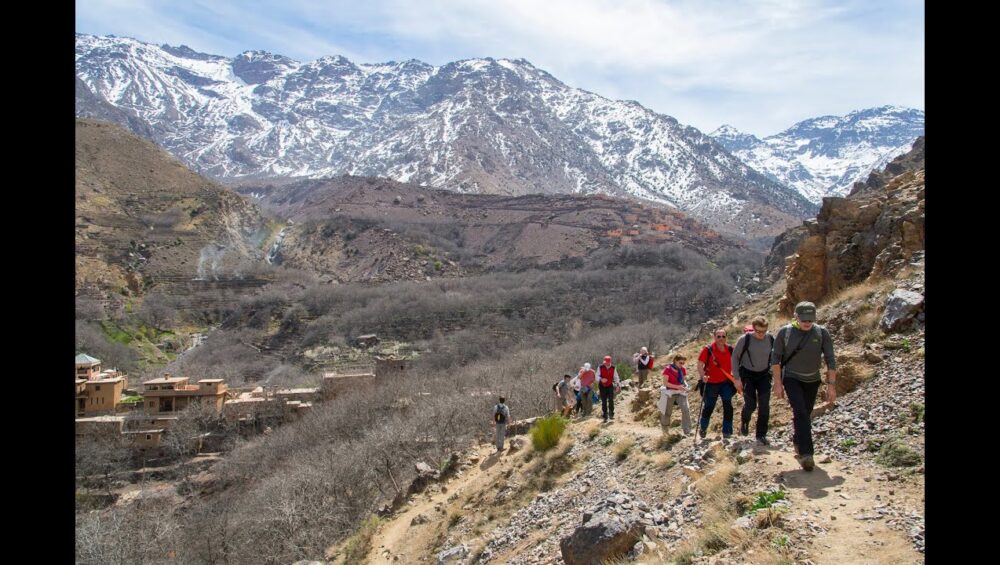Introduction
Mount Toubkal trek, standing tall at 4,167 meters (13,671 feet), is the highest peak in North Africa and a beacon for trekkers and adventurers worldwide. Located in the heart of the High Atlas Mountains in Morocco. This majestic summit offers a challenging yet rewarding trekking experience. In this comprehensive guide. We will take you through everything you need to know to embark on an unforgettable Mount Toubkal trek.
Why Mount Toubkal Trek?
A Cultural Journey
The combination of natural beauty and cultural immersion on the Mount Toubkal trek is one of its distinctive features. You’ll come across typical Berber settlements as you go across the Atlas Mountains, where the residents will hospitably greet you. This walk is a unique chance to engage with the vibrant Berber culture and experience their way of life.
Stunning Scenery
The stunning beauty along the way to Mount Toubkal is well-known. ranging from verdant valleys and terraced crops to rough mountains and snow-covered peaks. Every step leads to a different and it is breathtaking landscape. A panoramic view of the entire area is offered from the summit. Ensuring that the Mount Toubkal Trek t was well worth it.
Achieve an Epic Summit
Standing atop Mount Toubkal is a moment of triumph. The sense of accomplishment and the mesmerizing views from the summit make it a must-do for trekkers and mountaineers. Conquering North Africa’s highest peak is an experience you will cherish forever.
When to Go
Ideal Seasons
The best time for a Mount Toubkal trek is during the spring (April to June) and fall (September to November). During these months the trekking conditions are ideal. The temperatures are not too hot and the landscapes are lush and colourful.
Avoid Winter
While some brave souls attempt the trek in winter, it’s not recommended for beginners. Snow and freezing temperatures can make the journey extremely challenging and dangerous. Unless you have experience in winter mountaineering, it’s best to avoid the winter months.
Preparing for the Trek
Physical Fitness
The Mount Toubkal trek is a challenging endeavor that demands a good level of physical fitness. It involves long hours of hiking, steep ascents, and varying terrain. To prepare, engage in cardiovascular exercises, strength training, and regular hiking to build endurance.
Gear and Equipment
Packing the right gear and equipment is crucial for a successful trek. Some essentials include sturdy hiking boots, warm clothing (layers are key), a good quality sleeping bag, a trekking pole, and a headlamp. Make sure your gear is lightweight and moisture-wicking to stay comfortable during the trek.
Permits and Guides
Before embarking on your journey. You will need to obtain the necessary permits for the Toubkal National Park. It’s also advisable to hire a local guide or join a trekking tour. Especially if you are unfamiliar with the area. Guides are invaluable for navigation and ensuring your safety.
The Trekking Routes
Imlil to Toubkal Refuge
The most popular route to Mount Toubkal trek starts from the village of Imlil, which is easily accessible from Marrakech. The trek typically begins with a hike from Imlil to the Toubkal Refuge, a mountain hut at 3,207 meters (10,522 feet). This route takes about 6-8 hours and offers fantastic views of the surrounding valleys.
Toubkal Refuge to the Summit
From the Toubkal Refuge, trekkers set out for the summit early in the morning. This final push involves steep ascents, scree slopes, and a few technical sections. It’s physically demanding, but the reward is reaching the summit and taking in the breathtaking vistas.
Alternative Routes
There are other routes to Mount Toubkal trek, including the ascent via the Azzaden Valley and the round trip from Oukaimeden. Each offers a different perspective of the region and can be explored for a more varied experience.
Challenges and Safety
Altitude Sickness
Altitude sickness is a real concern when trekking at high altitudes. To minimize the risk, acclimatize properly by spending a night at the Toubkal Refuge before attempting the summit. Stay hydrated and listen to your body. If you experience symptoms like headache, descend immediately.
Weather Conditions
The weather in the High Atlas Mountains can be unpredictable. Always check the forecast before your trek and be prepared for sudden changes in weather. Snow and thunderstorms can occur, especially at higher elevations.
Guided Tours and Local Knowledge
Having a local guide with you is not only a safety measure but also a way to enrich your experience. They know the terrain, and weather patterns, and can communicate with locals if needed. Opting for a guided tour also ensures that you have proper support and backup in case of emergencies.
Accommodation and Facilities
Toubkal Refuge
The Toubkal Refuge is a basic mountain hut offering dormitory-style accommodations. It’s the most common place for trekkers to spend the night before summiting Mount Toubkal. Make reservations in advance during peak trekking seasons.
Camping
For a more adventurous experience, you can camp along the trekking route. Just ensure you have the necessary camping gear and follow Leave No Trace principles to protect the environment.
Berber Homestays
In some villages along the trekking route, you’ll find the option to stay with local Berber families. This provides a unique cultural experience and a chance to connect with the community.
Conclusion
A Mount Toubkal trek is a journey that combines natural beauty and a physical challenge. Whether you’re an experienced trekker or a novice. This adventure offers a chance to explore the stunning High Atlas Mountains of Morocco and stand atop North Africa’s highest peak. With the right preparation and guidance. You can make this trek a truly memorable experience.


